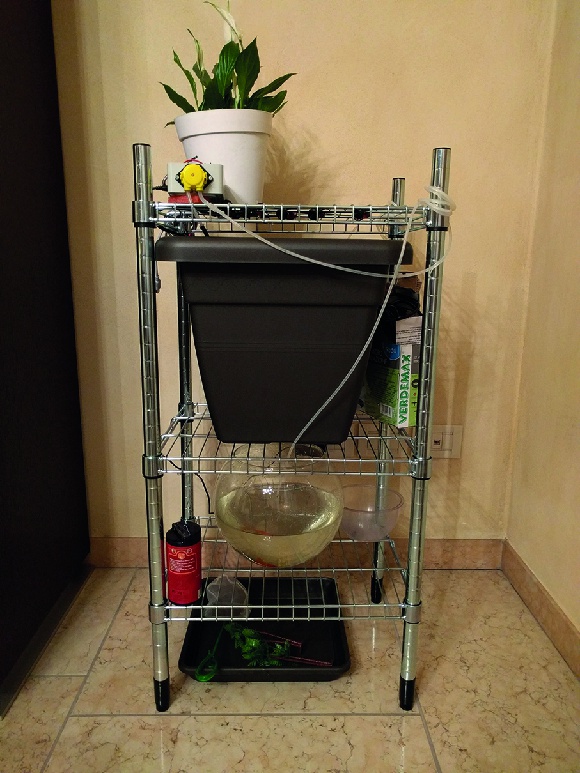“Living in a big city has pros and cons,” Diego Braga tells us. “One of the cons I suffered most is not having a small organic garden.”
Diego lives in Milan, in a small apartment with a smaller balcony that he spends a lot of time away from. That didn’t stop him wanting to grow some fresh veg for himself, though, and he looked at hydroponic gardens to see if that was a solution.
Building an aquaponic garden with live fish
“One of the cons of this approach is that you need to feed fertiliser in the water, and that’s something that, even if it can be automated, is not self-sufficient,” Diego explains. “In 2015, EXPO Italy took place and in a pavilion there was an aquaponics system in which plants and fishes were living close and feeding each other. I started to study the aquaponics system and it blew my mind: two different ecosystems (the aquarium with fishes and plants in the solid earth) can feed each other. The waste of one is the nourishment of the other. That was what I wanted.”
Diego figured all he’d then have to automate is the cleanliness of the aquarium, and decided to do it and collect sensor data via IBM Watson’s IoT platform. It took him a while to figure out how.
“First of all, I had to study a solution to keep the aquarium clean. The fish waste is the perfect nourishment for the plants and this waste lies on the bottom of the aquarium. One night I had an inspiration: use an X-Y plotter and, instead of writing on a surface, use a submersible pump to collect all the waste and deliver it to the plants.”
Aquaponic domestic garden pump and waste
Using an IKEA shelf with the aquarium at the bottom and pot on the shelf above, the waste water is pumped up to the plant, which then uses it and pH-balances the water, while gravity allows nutrients to drop down to the fish.
To get data from the sensors so he could keep an eye on it, Diego used a Raspberry Pi: “I already worked with Raspberry Pi devices in previous projects, but in this case the availability of the Node-RED orchestration that can interact with the GPIO pins and the availability of a Watson IoT node library was perfect to connect my aquaponics system to the cloud. The Raspberry Pi was the perfect piece to complete the puzzle.”
After so long, what does Diego think of his creation? “It works really well. It’s wonderful and reassuring to see plants growing in the living room next to the sofa. Up to now, I’ve planted basil and tomatoes and they’ve been really tasty. When I’m sitting in the living room, I can also smell the vegetables.”













